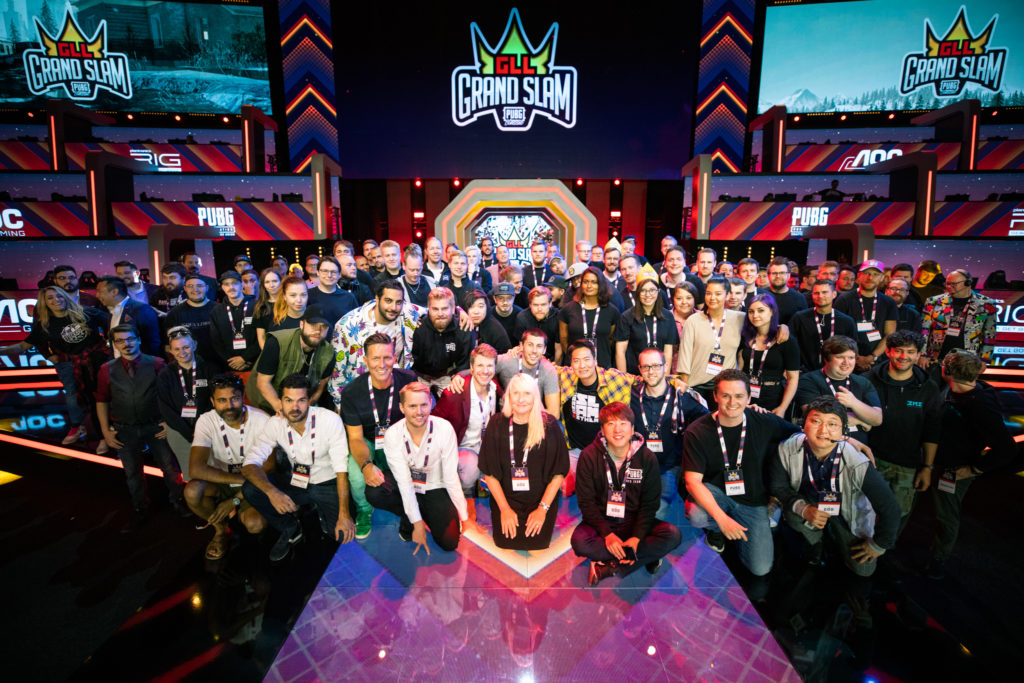G-Loot’s Chief Intelligence Officer, Jamie Dunbar Smyth, had a clear goal when he started using Segment:
Become an organization that makes decisions based on data.
See, the team at G-Loot — a global esports platform based in Stockholm — wanted to better understand their players. Everything from acquiring them to retaining them, and keeping them coming back for more. They also wanted to bring rapid-tempo testing and iteration into their organization.

The idea behind the move, according to Jamie, was to create autonomous teams that could run fast, adapt to changes, and do what they need to do.
He explains:
“_We have extremely aggressive growth goals and the only way to achieve our KPIs is by truly understanding our players. To do that, we need clean, consistent, and credible data, stored in one place, and with enabled integrations of the core tech stack to act upon the data.”_
Since using Segment in late 2019, G-Loot has become a company rooted in data. They’ve replaced wasteful big bets and guessing approaches with more consistent, cost-effective, and repeatable processes. And they’ve armed their product teams with a way for people to act on data quickly and easily.
Here’s their story.
Throw spaghetti at the wall, see what sticks
For many fast growing startups like G-Loot, the default approach to growth is to “throw spaghetti at the wall”. Blindly try out a bunch of tools and tactics and hope that one works. Instead, they wanted teams to put players at the center of everything they do. For example, one team would be focused on increasing value-added actions for players. Another would focus on data-driven personas for marketing outreach. All of which require a top-notch tech stack.
This was easier said than done.
When Jamie arrived at G-Loot, what was in place was a very basic tech stack. This posed a great problem for an organization wanting to shift into rapid and continuous product iteration. G-Loot had been relying on a limited infrastructure for its organization to track events and pull player insights. They had to run all custom development to get actionable data, which burdened developers and stalled product roadmaps.
Jamie describes:
“We relied on one BigQuery warehouse collecting data through a custom ETL built by the back-end team. The warehouse was useful for financial reporting, but the team struggled to pull behavioral insights that would help them create more personalized experiences for our user base.”
Acting upon their own data for the first time
To create a fully integrated culture of data, G-Loot needed three things:
-
To get actionable insights from their data quickly and easily.
-
To unite the company around these insights.
-
To make product and business decisions based on the data.
To choose the right tool, Jamie uses what he calls the “Picasso model”. In short, look outside your field for inspiration. His inspiration was the tech stacks of some of the fastest growing companies in the industry - Pinterest, Slack, Airbnb, Uber etc. As he was browsing through the stacks on StackShare, one name kept cropping up over and over – Segment.

By researching best of breed tech stacks on StackShare, Jamie found Segment.
It was clear to Jamie the team needed to give it a go. They started small, focusing first on their mobile team to collect player events. And a few days after implementation, teams started to see how Segment could help build better product experiences.
Jamie explains,
“We had dashboards up on Amplitude, with real product data via Segment, before we had even partnered with Amplitude. The office started saying, "Oh wow, what's this? Oh this is really cool, I really want this."
So they continued to broaden the scope, adding new tools to their stack that made data available for everyone. Jamie described the speed of integrations as key to standardizing data and unlocking resources in different teams.
For G-Loot, building on top of Segment also allowed them to create:
-
An input approach for teams to improve and enhance data.
-
A centralized data library to keep teams informed on new updates.
-
A way to test and build the best stacks quickly.
By the end of 2019, G-Loot had its full-stack in place, and Segment was now the core of its infrastructure. This allowed all teams to leverage information they require, enable feedback, and ultimately, put people in the driver’s seat.
As Jamie describes it:
“Our mantra is to treat data as a product. There’s now an entire data ops approach in the business. We can make sure that when the product evolves and we create new events, there’s a clear process to make sure they aren’t forgotten from the development process.”
Segment became the foundation for growth in the company
When someone wants to add a tool to G-Loot’s new tech stack, the first question Jamie asks is:
“Does it integrate with Segment?”
Because Segment connects with their core tools FullStory, Optimizely, Google Analytics, Braze and Amplitude, the G-Loot team was able to immediately improve on their products. That’s because teams who use Segment can learn about how their products are used, and iteratively build-in better features.
At G-Loot, every team from mobile and payments, to marketing and business intelligence, has data piping into Segment, with some incredible results so far. We’ll leave the last word to Jamie:
“Since adopting Segment, clickthrough and conversion rates have doubled on average. For the games we promoted, clickthrough rate was in excess of 10% and sign-up conversion rates have tripled.”

The State of Personalization 2023
Our annual look at how attitudes, preferences, and experiences with personalization have evolved over the past year.